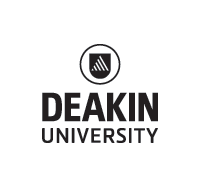HMI203 - Medical Imaging Practice 3
Unit details
| Year | 2026 unit information |
|---|---|
| Enrolment modes: | Semester 1: Waurn Ponds (Geelong) and clinical placement sites |
| Credit point(s): | 2 |
| EFTSL value: | 0.250 |
| Unit Chair: | Semester 1: Jodie Ringin |
| Cohort rule: | This unit is only available to students enrolled in H309 |
| Prerequisite: | HMI104, HMI105 |
| Corequisite: | HMI201 and HMI202 |
| Incompatible with: | Nil |
| Educator-facilitated (scheduled) learning activities - on-campus unit enrolment: | 1 x 2 hour lecture per week |
| Typical study commitment: | Students will on average spend 300 hours over the teaching period undertaking the teaching, learning and assessment activities for this unit. This will include educator guided online learning activities within the unit site. |
Note:HMI203 is a Clinical Placement unit. | |
Content
This unit furthers the developmental sequence of student progression through the novice to expert continuum. Initially it provides students with the foundation elements of contrast and therapeutic imaging related to examinations of the gastrointestinal genito-urinary and hepato-biliary system with technical emphasis on the management of both fixed and mobile digital fluoroscopic systems. This approach is clinically integrated with consideration of the role of the radiographer/ technologist in managing and implementing protocols that direct these procedures.
Stage two of the unit initiates the development of the broader general radiographic skills required for modified positioning of the vertebral skeleton with emphasis on the radiography of the upper cervical region leading to the plain radiography of the skull and facial bones inclusive of planar dental imaging (OPG).
Simulated practice and supervised clinical exposure to patients will enable students to apply these principles across a wide range of examinations.
Stage three of the unit introduces the basic principles and analytic approaches involved in the systematic interpretation of radiographic images. Students will initially consolidate their understanding of the normal appearances and common variants of the axial and appendicular skeleton, chest and abdominal structures. The process will be developed to extend their recognition capability to identify imaging appearances consistent with common types of abnormalities consistent with clinical cases that commonly present in practices in regional and rural locations.
Learning outcomes
| ULO | These are the Unit Learning Outcomes (ULOs) for this unit. At the completion of this unit, successful students can: | Alignment to Deakin Graduate Learning Outcomes (GLOs) |
|---|---|---|
| ULO1 | Explain the technical principles and scope of imaging examinations underlying digital fluoroscopic imaging systems, image intensifiers and planar conventional tomography. | GLO1: Discipline-specific knowledge and capabilities |
| ULO2 | Demonstrate teamwork and professional responsibility when performing fluoroscopic and/or digital imaging procedures of the gastrointestinal, urinary and hepatobiliary systems inclusive of plain and contrast enhanced imaging techniques. | GLO1: Discipline-specific knowledge and capabilities |
| ULO3 | Describe, critically evaluate and quality assure the effectiveness of technique and exposure protocols for all general and contrast radiographic imaging with regard to technical accuracy, image quality and radiation protection requirements. | GLO1: Discipline-specific knowledge and capabilities |
| ULO4 | Implement and critically evaluate appropriate quality control measures when operating digital fluoroscopic imaging systems in permanent departmental installations and also when using portable mobile systems in a variety of clinical settings. | GLO1: Discipline-specific knowledge and capabilities |
| ULO5 | Manage fluoroscopy examinations in both fixed and mobile clinical settings as a participant in multidisciplinary and inter-professional team dynamics across a range of clinical scenarios. | GLO1: Discipline-specific knowledge and capabilities |
| ULO6 | Critically evaluate the resultant images in terms of technical quality, positioning criteria and diagnostic accuracy and where necessary use critical thinking skills to formulate problem-solving strategies for less than optimal imaging outcomes. | GLO1: Discipline-specific knowledge and capabilities |
| ULO7 | Reflecting on the value of interprofessional collaborative practice and the roles of a range of health professions. | GLO1: Discipline-specific knowledge and capabilities |
Assessment
| Assessment Description | Student output | Grading and weighting (% total mark for unit) | Indicative due week |
|---|---|---|---|
| Assessment 1: | 15 minute Group Presentation | 10% |
|
| Assessment 2: | 1000 words | 20% |
|
| Assessment 3: | Technical Evaluation, Recognition, Analysis and Interpretation of Fluoroscopic and Radiographic images covered over the semester | 25% |
|
| Assessment 4: | Practical assessment in Medical Imaging practical lab | 30% |
|
| Assessment 5: | Final Assessment of placement progression over the four week placement block | 15% |
|
The assessment due weeks provided may change. The Unit Chair will clarify the exact assessment requirements, including the due date, at the start of the teaching period.
Hurdle requirement
- Passing the Clinical Placement is a pass/fail hurdle requirement
- Completing and passing a Self-Reflection on Professional Behaviour is a pass/fail hurdle requirement
Learning resource
The texts and reading list for HMI203 can be found via the University Library.
Note: Select the relevant trimester reading list. Please note that a future teaching period's reading list may not be available until a month prior to the start of that teaching period so you may wish to use the relevant trimester's prior year reading list as a guide only.
Unit Fee Information
Fees and charges vary depending on the type of fee place you hold, your course, your commencement year, the units you choose to study and their study discipline, and your study load.
Tuition fees increase at the beginning of each calendar year and all fees quoted are in Australian dollars ($AUD). Tuition fees do not include textbooks, computer equipment or software, other equipment or costs such as mandatory checks, travel and stationery.
For further information regarding tuition fees, other fees and charges, invoice due dates, withdrawal dates, payment methods visit our Current Students website.
